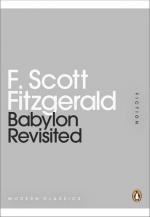|
This section contains 1,409 words (approx. 4 pages at 400 words per page) |

|
Throughout the 1930s, Fitzgerald suffered guilt by association for his early identification with the "flappers and philosophers" of the so-called Jazz Age. In the years of the Great Depression, Fitzgerald's identification with the comparatively carefree 1920s rendered him irrelevant in the opinion of readers who were now enduring rather hardscrabble lives. Moreover, with "The Crack-up," a series of essays published in Esquire magazine in the mid-1930s, readers who were accustomed to seeing Fitzgerald's cleverly phrased romantic entertainments in the "slick" magazines now discovered a writer who bluntly described himself as a "cracked plate," an alcoholic has-been whose best days were behind him. With his move to the glitzy, superficial world of Hollywood in the late 1930s, Fitzgerald's critical reputation reached its low tide, and it was not until the decade after his death that his work was seriously reevaluated. From the beginning of the Fitzgerald...
|
This section contains 1,409 words (approx. 4 pages at 400 words per page) |

|




